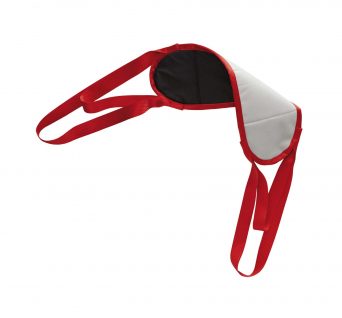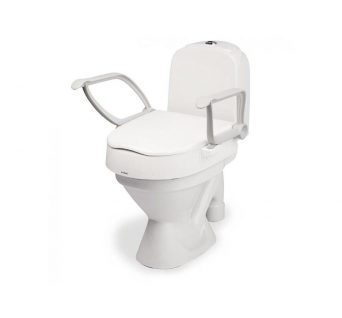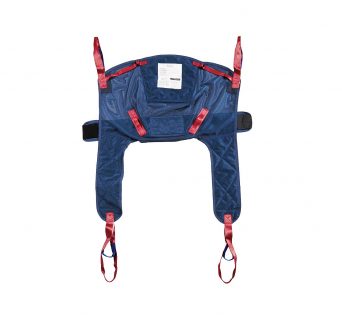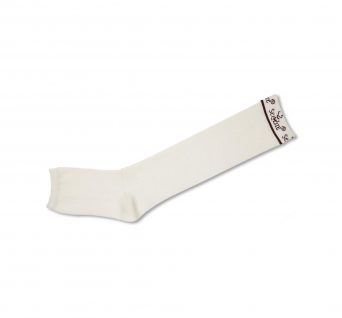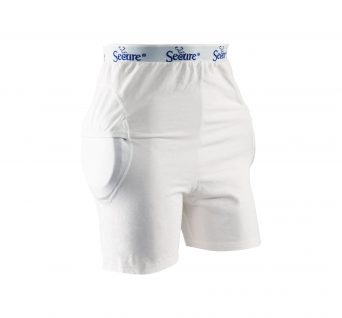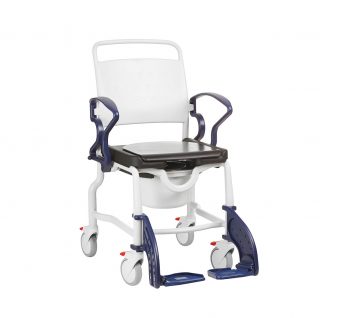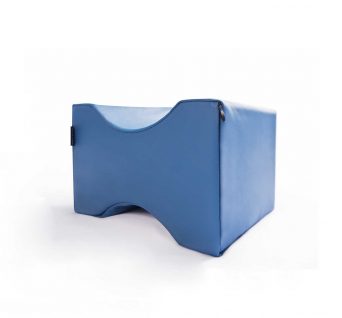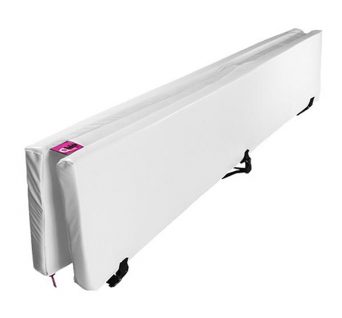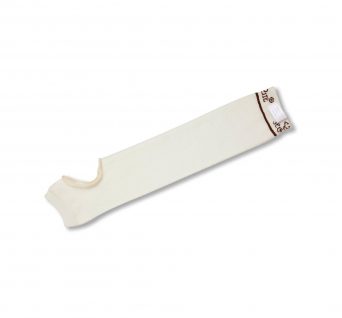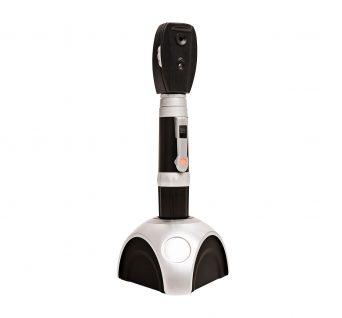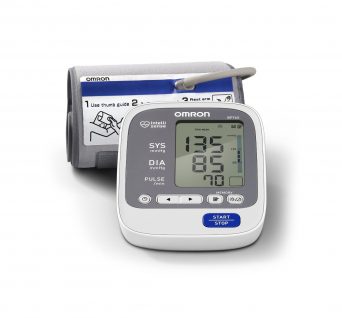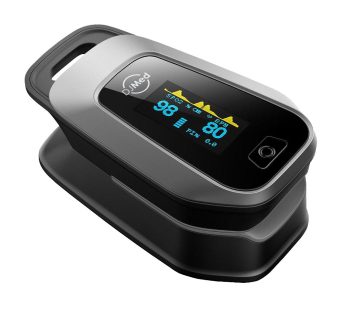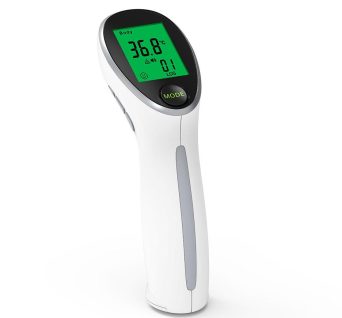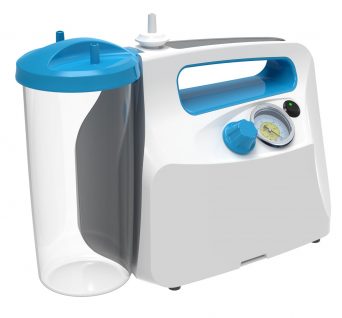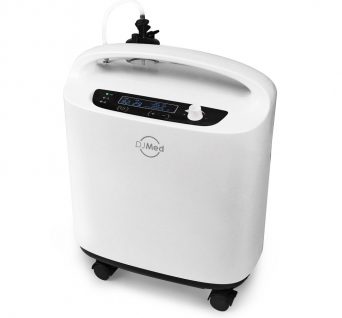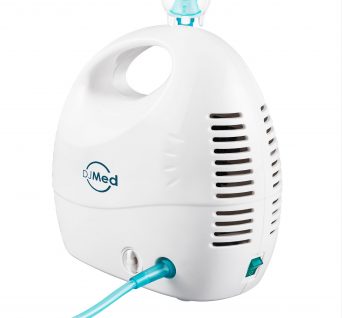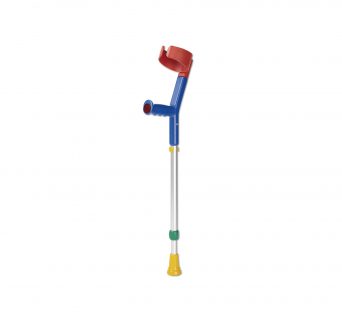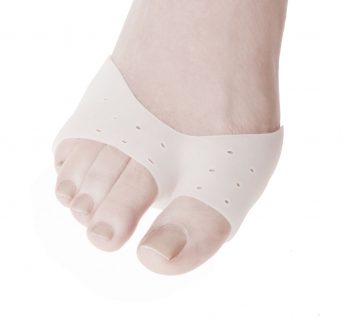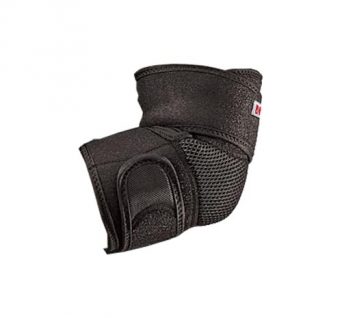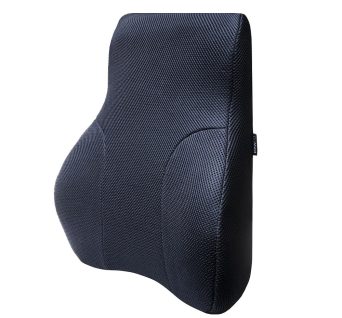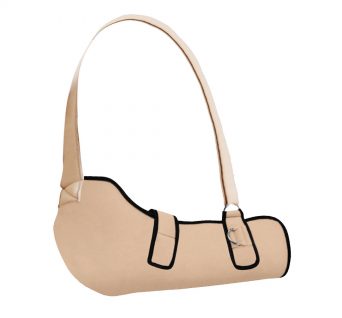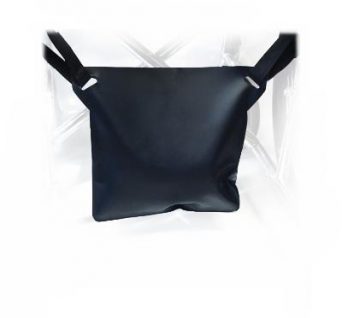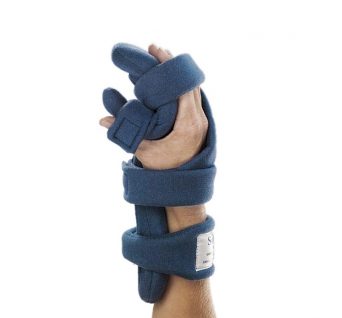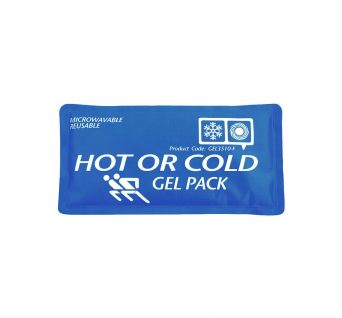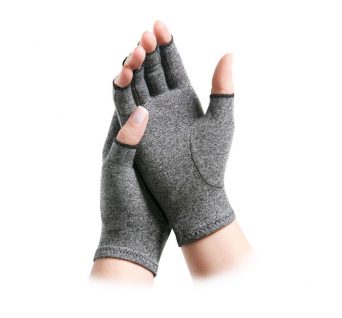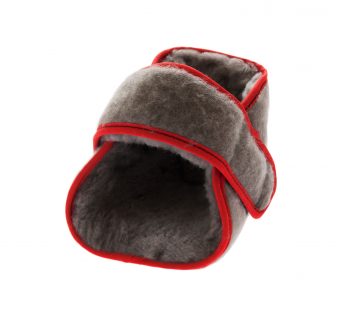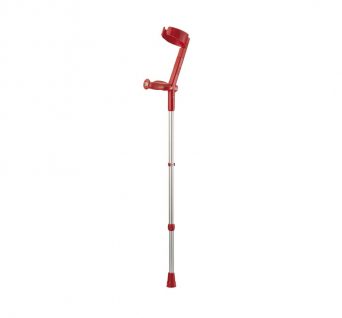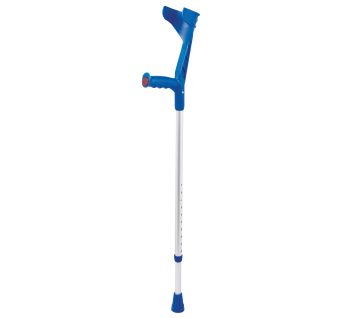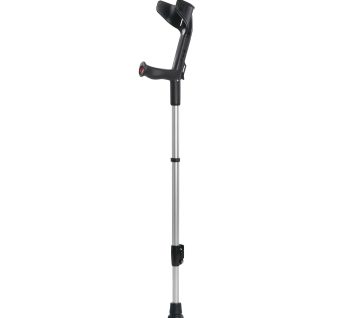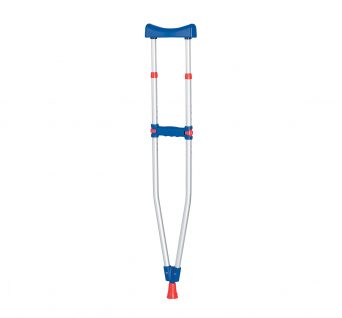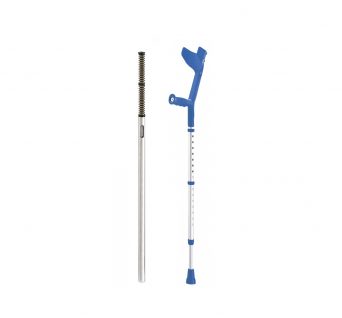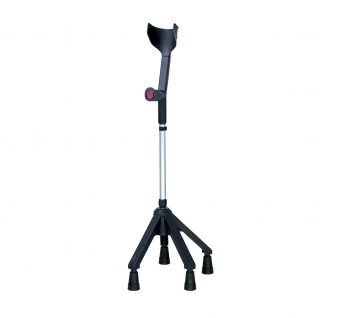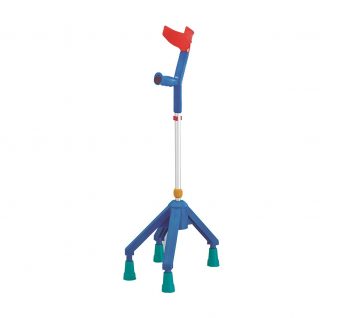No products in the cart.
Crutches
Showing all 14 results
- Crutches
Rebotec ECO 120 – Forearm Crutches
Strong, lightweight, attractive, made in Germany (pair)
Forearm Crutches are constructed of lightweight aluminium tubes for light, easy, and comfortable maneuverability.
ECO 120 forearm crutches are height adjustable, attractive and strong. Smartly designed and manufactured in Germany.
SKU: 7799 - Crutches
Rebotec Travel – Collapsible Elbow Crutches
Collapsible for small size, includes bag for travel (sold in pairs)
Very convenient to carry, travel and store. It is made of high-quality material, durable and strong. Move around in safety indoors and out with the help of these travel crutches.
Sold in pairs (2pc)
SKU: 108. - Crutches
Rebotec BIG 250 – Heavy Duty Forearm Crutches (Pair)
Strong, adjustable, attractive, made in Germany
Heavy-duty bariatric forearm crutches are height-adjustable, ergonomic, and certified for up to 250kg support. Quality forearm crutches with smart German design & manufacturing.
Crutches are sold in pairs (2pc)
SKU: n/a - Crutches
Rebotec Quick´N Easy – Underarm Crutches – Pair
Light aluminum, strong underarm crutches, with a comfortable, attractive design made in Germany
Stable, durable, and lightweight tube crutches with a height adjustable pushpin base.
Equipped with a clip lock soft rubber hand-grips and cushioned armpit support for comfortable manoeuvrability.
SKU: 7798 - Crutches
Rebotec Fun-Kids – Open Cuff Crutches for Children
Open cuff forearm crutches for kids, made in Germany.
Crutches are sold in pairs (2pc). Rebotec Fun-Kids are an open cuff forearm crutches for kids.
Rebotec Fun-Kids crutches are sturdy rolled and welded (stronger than extruded) aluminum, the crutches sized for children, with a colorful open open half cuff design for active kids. The height of the grip can be adjusted to accommodate as required.
SKU: 122. .. - Crutches
Rebotec New Walk – Crutches with Spring Shock Absorbers
Crutches with shock absorbers for forearm, elbow, and shoulder fatigue reduction, made in Germany.
These 2pcs Rebotec New Walk – Crutches with Spring Shock Absorbers are designed to help you walk with less pain and fatigue. The absorbent spring takes most of the weight, reducing stress on your arms, shoulders, and elbows.
The open cuff design allows for a more natural gait and reduces perspiration/moisture build-up on sleeves. Finally, they are lightweight, sturdy, and durable.
- Seven heights adjustments
- Shock absorbing
- Lightweight, sturdy, and durable
- Open cuff design
SKU: n/a - Crutches
Rebotec Quadro – Quad Forearm Crutch
Designed for those transitioning from a walker to a single point cane, the Rebotec Quadro Forearm Crutch offers outstanding stability and comfort.
The arm crutch includes a wide footprint with four interdependent rubber feet and a durable open forearm cuff with a cushiony rubber handle.
The four point crutch features a flexible design with ten adjustment settings, making it suitable for use with multiple patients and can be adjusted to each person’s height.
SKU: 155. .. - Crutches
Rebotec Quadro Fun-Kids – Quad Forearm Crutch
Quad forearm crutch designed for children with mobility issues.
Assist balance, walking and stability. Quad forearm crutches can be used for right-handed or left-handed. It has a comfort system (anti-noise) construction with 10 height adjustments.
SKU: 156.95 - Crutches
Rebotec Safe-In-Excess Length (pair) – Tall Forearm Crutches
Tall forearm crutches with hinged forearm cuff for improved mobility.
Rebotec Safe-In-Excess Length Crutches are designed to improve your mobility, comfort, and support.
These crutches have a hinged forearm cuff with ten height adjustments, allowing you to find the most comfortable and practical height.
A safety night light reflector is also included to help improve user safety when using crutches in the dark.
SKU: 116.10.20 - Crutches
Rebotec Yano – Rheumatism & Arthritis Crutches
Distributed weight over forearm instead of hand. For people who have difficulty using normal crutches due to reduce arm and hand strength.
Sold as a pair.
Rebotec Yano help prevent blisters on the palm, and are healthier for tendons in the wrist. This allows for a more pleasant experience while requiring support for short and long-term uses.
SKU: 130.00.10 x2 - Crutches
Rebotec BIG Travel – Telescopic Travel Crutches
Pair of dual telescopic travel crutches, wide open cuff, reinforced handle with cuff and shaft height adjustments.
Experience improved mobility and comfort with the Rebotec BIG Travel telescopic crutches. Perfect for travel or heavyduty daily use, these innovative crutches are designed with user-friendly adjustability features and premium construction to provide lasting support.
The reinforced aluminium body keeps the BIG Travel crutches ultra lightweight yet durable enough for daily activities. The slip-resistant rubber tips provide safety and stability on all types of indoor and outdoor surfaces.
Crutches are sold as a pair (2pc)
SKU: 108.00
Forearm Crutches, Underarm Crutch, Heavy Duty Crutches & Crutches for Kids
A crutches are a mobility aid device that helps transfer weight from the legs to the upper body of the person using them. They are often used by people who cannot use their legs to support their weight, for example: short-term injuries to lifelong disabilities.
Choosing the Right Crutch
There are many different types of crutches and depending on your injury will depend on the type you will need. Crutches can help an individual when they are unable to walk unaided. This could be because of a disease, injury, or simply a weakness. Whatever your reason for needing a crutch, your doctor will discuss with you which type will be most beneficial for your situation.
Some people who suffer with paralysis use crutches as they can help them stand more upright opposed to being confined to a wheelchair. Maintaining an upright posture helps prevent calcium depletion and enhances circulation among other things. However a user must still have sufficient strength, balance, and coordination in order to use crutches safely and effectively.
When using crutches, the body’s weight is distributed evenly throughout the whole upper body, so if yours is poor, you may be more suited to knee scooter/walker styles instead of the traditional forearm or underarm designs. Even those with good upper body strength, coordination, and balance may find it difficult using crutches to begin with. Most people find underarm crutches the easiest to use but forearm crutches allow much greater control.
For crutches to be effective they need to be properly fitted to each individual. As a general guide, the user should be able to stand straight with their elbow bent to a 15-30 degree angle with the hand resting on the crutch handle. Ensuring you have the right tip and handles is also an important part of getting the right crutch. You want the tip to be slip-resistant. This will help provide extra support and balance, as will a larger tip. Some tips are spring-assisted also which allows the crutch to adapt to that of the individual and move with them. Some crutch handles offer extra padding to relieve some of the strain on the wrists and hands.
Types of crutches
Crutches come in various shapes and sizes to accommodate different people and different injuries. Making sure you have the right crutch for your situation will make life a lot easier for you when using them. If in any doubts as to what you should be using, please seek medical advice. The most common type of crutches include the following:
- Forearm crutch: This is sometimes referred to as the Lofstand crutch and is a type of arm crutch that’s more suited to those who will need crutches long term or are very active. These feature cuffs around the top of the them that fit around the user’s arm and is generally more comfortable to use than an underarm crutch. Patients who have a thigh or hip injury often use these crutches as they can be easily adjusted to accommodate different heights and weights.
- Underarm crutch: Other wise known as the axillary crutch, this is the most common crutch to use and also the easiest to maneuver. The ribcage pad goes under the user’s armpit, while they grip the pad located below. A crutch needs to be measured up against the user to ensure it’s a good fit. To do this, make sure the crutch top extends from around 6 inches or so from the armpit to the floor, about 6 to 8 inches from the user’s foot. Hands should be able to rest at a level that’s around a 30 degree angle.
- Platform crutch: Also known as the triceps crutch, this type of crutch is more suited to anyone who has problems with cerebral palsy, arthritis, or poor hand strength and grip. The hand grips are easily adjusted to suit the user’s disability while their arm is strapped into place upon a horizontal platform. To ensure a proper fit, the crutch should reach to about 2 inches below the armpit with the lower cuff around ½ an inch to 1 ½ inches below the back of the elbow.
- Leg support crutches/knee scooters/walkers: Leg support crutches are designed to keep the affected leg strapped up and attached to a support frame that’s normally on wheels for help with mobility. They’re often used when there’s been an injury below the knee or for disabilities that affect just one leg. Leg support crutches work by transferring the weight from the ground to a person’s knee or thigh, leaving the affected leg clear of the ground.
- Strutter crutch: This is simply another type of underarm crutch. It has larger crutch tips that always stay flat on the floor, improving weight distribution and balance.

